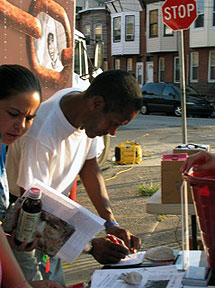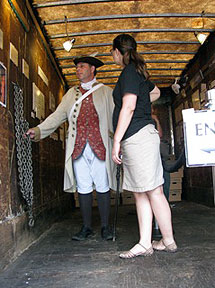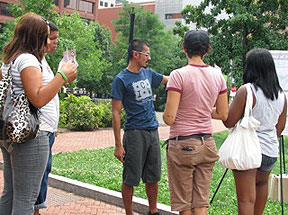July 27-29, 2010
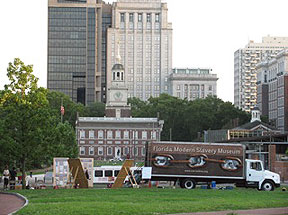 The site for most of the visit — directly outside Independence Hall, in a highly trafficked constellation of museums and historic buildings — provided an ideal opportunity to reflect on the themes of freedom and bondage throughout American history. After all, it was in the colonial-era building located directly behind the mobile museum (pictured above) that the Declaration of Independence and Constitution were debated and adopted more than two hundred years and forty ago. And it was in that same building where language condemning the slave trade as an “assemblage of horrors” was stripped from an early draft of the Constitution, in effect allowing the importation of slaves to continue unabated for another twenty years.
|
 The Liberty Bell, originally known as the “Independence Bell,” was so named by the growing abolitionist movement which called Philadelphia home. In fact, the American Anti-Slavery Society was founded in Philadelphia in 1833 and later counted among its key members none other than Frederick Douglass. Douglass himself had passed through Philadelphia via the Underground Railroad in 1838 and would return to Independence Square six years later to encourage the nation to live out the famous bell’s inscription to: “… Proclaim liberty throughout all the land unto all the inhabitants thereof…” Over the course of the mid-ninteenth century, many men and women, both black and white, came to see the Liberty Bell as a powerful symbol of the struggle to abolish slavery.
|

|
|
|
|
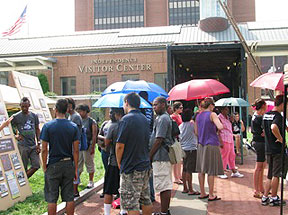 |
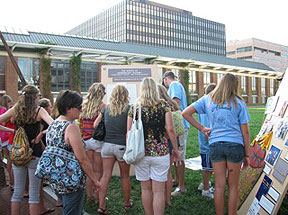 |
|

|
|
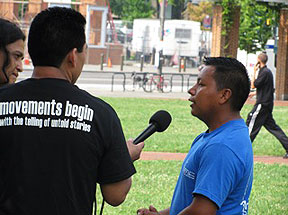
|
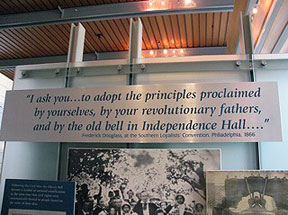
|

